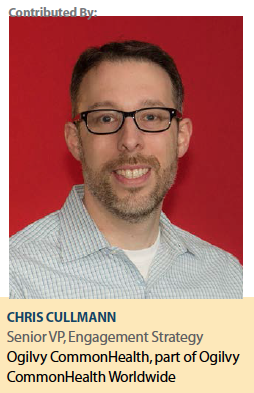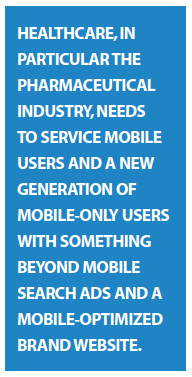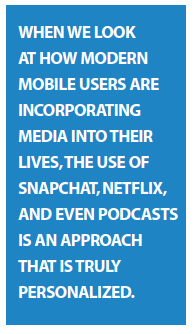 Facebook Messenger. Snapchat. Netflix. Podcasts. What do each of these have in common? A new model for audience engagement. The new model is one that is disruptive, quickly changing, and highly personalized. The disruption is one that healthcare, as an industry, will need to pay a lot of attention to.
Facebook Messenger. Snapchat. Netflix. Podcasts. What do each of these have in common? A new model for audience engagement. The new model is one that is disruptive, quickly changing, and highly personalized. The disruption is one that healthcare, as an industry, will need to pay a lot of attention to.
The change is significant: In the past year, Pew Research notes that 62% of smartphone owners have used their device to research health information. We are also seeing the tipping point for many brands that more than half of their traffic is mobile. Many more will come to the 50% mark this year based on continued trends.
Search — and access to an “always-on" device — are putting the world’s information (or at least search results) at our fingertips, literally.
Personalized Messaging Key to Behavior Change
What is so special about these devices? It is not the size nor the speed. For many users, the pace at which smartphones are replaced seems to mock desktop computer upgrades. The core of the change is in the personalization that smartphones represent. From SMS messages to our favorite music, our preferences are held within the small screen. And this is so much of what makes it an ideal venue for healthcare information and behavior change.
Healthcare, in particular the pharmaceutical industry, needs to service mobile users and a new generation of mobile-only users with something beyond mobile search ads and a mobile-optimized brand website. The opportunities are going to lie in creating value from a touch point with both patients and physicians. Without this value, other parties — many without the authority or experience — will begin to fill a place in users’ home screens.
Advice to Brand Managers: Look to Communication Channels
 The first place healthcare brands need to look is in communication channels. While many users, up to 83%, still turn to e-mail on their mobile devices, many use messenger platforms like Facebook Messenger or WeChat. Others prefer text for correspondence. Some will turn to the phone’s root purpose: calling. Make sure that you can allow flexibility for outreach. This means as much for a CRM program as it does for a “just in time" request.
The first place healthcare brands need to look is in communication channels. While many users, up to 83%, still turn to e-mail on their mobile devices, many use messenger platforms like Facebook Messenger or WeChat. Others prefer text for correspondence. Some will turn to the phone’s root purpose: calling. Make sure that you can allow flexibility for outreach. This means as much for a CRM program as it does for a “just in time" request.
The native tools and the ubiquity of social media apps on mobile platforms make an ideal activation platform for patients and physicians. Providing content that is valuable and leveraging a pharmaceutical brand’s authority as a manufacturer allows a user to share and link easily. Brands, especially in the mobile space, need to recognize this as a call to action and shared content a key sign of successful engagement with audiences.
When we look at how modern mobile users are incorporating media into their lives, the use of SnapChat, Netflix,  and even podcasts is an approach that is truly personalized. It allows the control of exactly what they are seeing, when they are seeing it, and their willingness to seek it out. These new channels, Facebook Messenger included, showcase a very savvy consideration as to how they are interacting with marketers.
and even podcasts is an approach that is truly personalized. It allows the control of exactly what they are seeing, when they are seeing it, and their willingness to seek it out. These new channels, Facebook Messenger included, showcase a very savvy consideration as to how they are interacting with marketers.
SnapChat, the most enigmatic of the noted examples and with meteoric growth, is a hot topic. SnapChat allows users to view through search and their own “Discovery" channel content created by brands. Because of the temporal nature of the program, engagement is fleeting but frequent (60% of the users are on at least once a day) and again challenges some of the more traditional performance models for digital marketing.
For the modern healthcare marketer, the takeaway is simple but challenging: Mobile is a very quickly advancing juggernaut. You must be nimble and willing to embrace new marketing techniques and measurements.
It is critical to see and consider a very quickly moving tide in both patient and healthcare professional behavior that will change what a healthcare brand can offer an audience and how that audience will take action.(PV)
Ogilvy CommonHealth Worldwide — the health behavior specialists of Ogilvy & Mather — is committed to creativity and effectiveness in healthcare communications, everywhere.
For more information, visit ogilvychww.com











